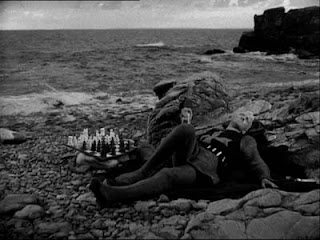“ Film Narratives are important for two reasons: they describe the different temporal experiences of individuals, and they reflect and reveal the shapes and patterns of larger social histories (of nations, communities, and cultures)” – Corrigan and White. (The Film Experience. An Introduction. The Significance of Film Narrative p. 259)
“Multiple narrations are found in films that use several different narrative perspectives for a single story or two different stories in a movie that loosely fits these perspectives together”- Corrigan and White. (The Film Experience. An introduction. Multiple Narratives p. 258)
Darren Aronofsky’s 2006 film, The Fountain, is a perfect example of a multiple narration. The film uses of three parallel stories that are based around two characters that exist in the present but are also embodied into imaginary characters of other time and dimension, invented and historic.
The three layers united by a single symbol, which is the tree of life. Each narrative is invented to tell the story from the perspectives of:
A) Reality
B) Izzy’s Imagination
C) Tommy’s Imagination.
The story takes place during the most difficult trial of Tommy and Izzy’s relationship, at its very end, as Dizzy is deathly ill and Tommy seeks a cure for her condition.
The narrative that is set in reality tells a tragic story of Tommy’s loss of touch with his wife as he becomes obsessed with finding the cure to her disease. His research consists or extracting cancer fighting chemicals out of tree bark. He becomes so determined to save Izzy that he misses out on the rest of time that she has left on this eath.
The second part of the narrative is based on a fictional novel that Izzy is writing. The novel is based on historic facts from the 16th century, where Tommy takes a role of a conquistador that searches for a tree of life that will bring power and eternal youth to his queen, aka Izzy. The Novel represents her desire of Tommy’s loyalty and determination. Through it she fantasizes of being reunited with her husband, because in reality he is always too occupied to spend time with her.
The third part of the narrative tells a story of Tommy’s emotional and spiritual imagination. He envisions himself not as a scientist but as a man of spiritual belief, floating through space in a dimension where miracles are not unlikely. Tommy’s imaginary self exists in a floating sphere where he is the only human-like creature. Tommy’s only companion is a god-like tree that keeps him alive as he keeps eating it’s bark to remain alive. Both Tommy and the tree await a miracle that will save them. Occasional visits from Izzy’s spirit distract them, because they force Tommy to see the reality of things.
The tree in the first two narratives represents the cure for Izzy’s condition, however in Tommy’s narrative it represents Izzy, and the cure for Tommy’s misery in case of Izzy’s death. He must selfishly continue to eat the bark from the tree of life, similarly to the way me he must selfishly find a cure to Izzy’s cancer, because without her he is as good as dead. The tree if life and eternal life are impossible to reach. Death cannot be cheater. One must learn to love life and to cope with death.
Works Cited
Corrigan, Timothy, and Patricia White. Film Experience: an Introduction. New York, NY: Bedford/St. Martins, 2009. Print.
"The Fountain (2006) - IMDb." The Internet Movie Database (IMDb). Web. 116 June 2011. <http://www.imdb.com/title/tt0414993/>.
"Google Images." Google. Web. 16 June 2011. <http://www.google.com/imgres?imgurl=https://blogger.googleusercontent.com/img/b/R29vZ2xl/AVvXsEjd-OF_k2OclHDluENrq7XxvQr4hDMirej8-Z1comzq1oy491-TM4Bkk2z6Wg_gy3IOp7nyUvwXWuMj1EYBFRw3mCgQxz3kIqPiJdv8APgfteUA7-ovOyiWt-xbKBpyHiD6bzW9jv2x9baB/s1600/the_fountain.jpg>.
"Google Images." Google. Web. 16 June 2011. <http://www.google.com/imgres?imgurl=http://trailers.apple.com/trailers/wb/thefountain/trailer1/images/fountain_apple_05.jpg>.
"YouTube - The Fountain Trailer." YouTube - Broadcast Yourself. Web. 16 June 2011. <http://www.youtube.com/watch?v=NDp-F3Y97ZQ>.










